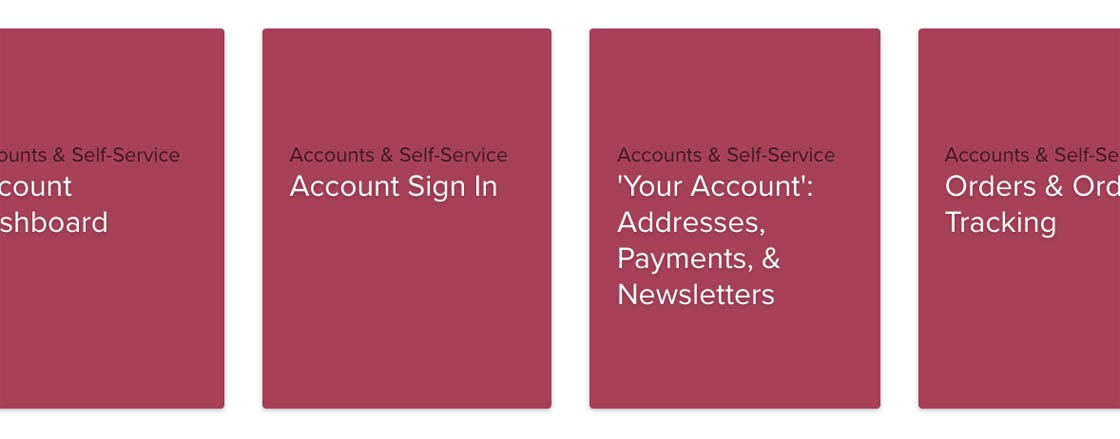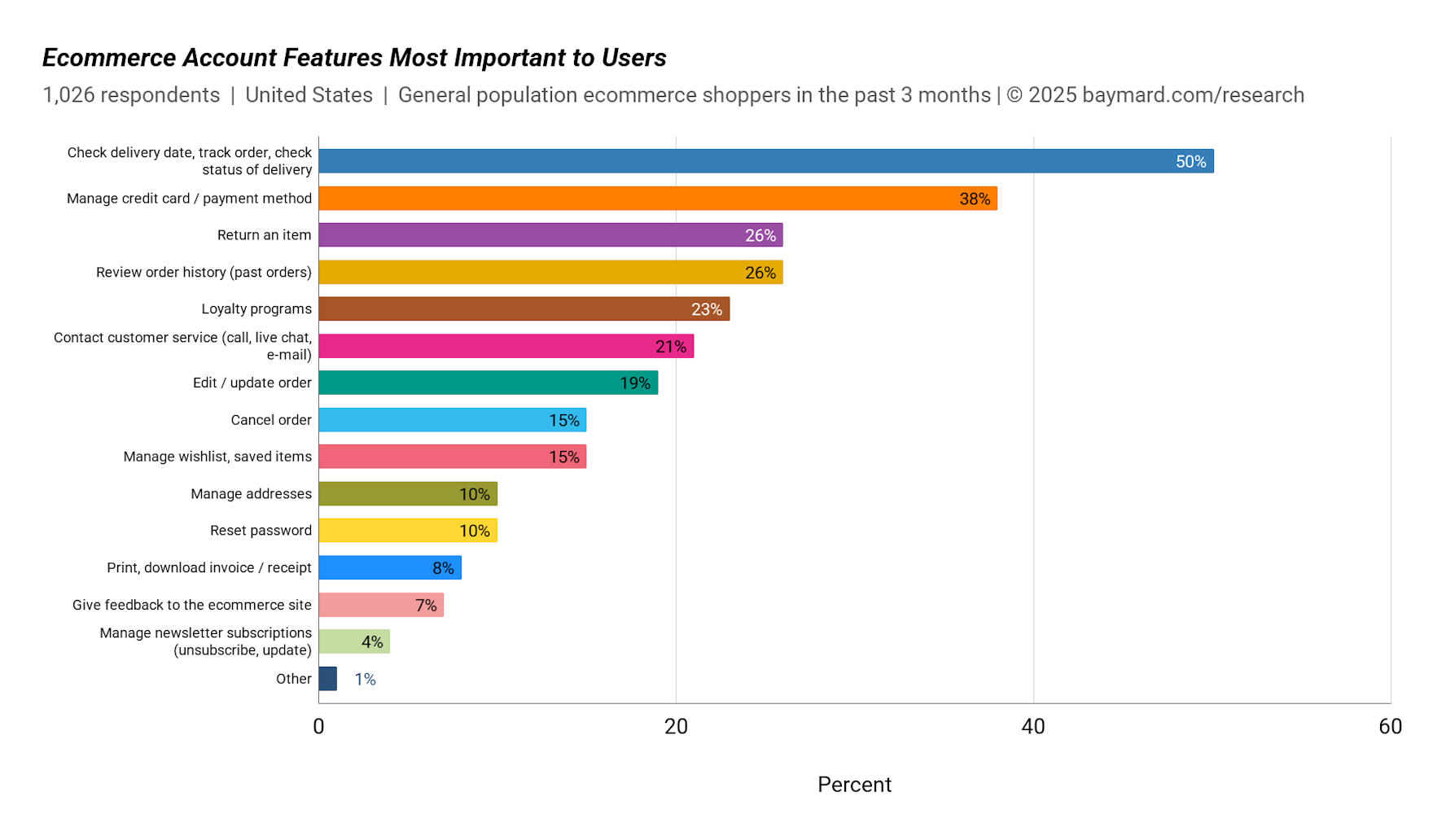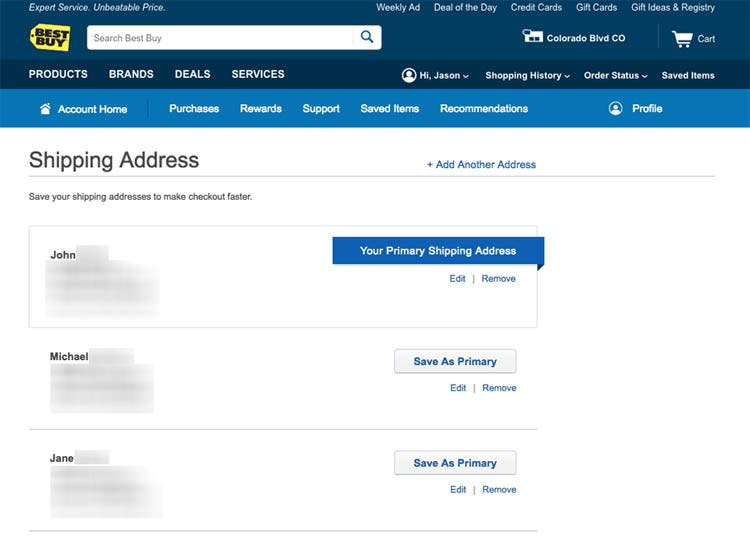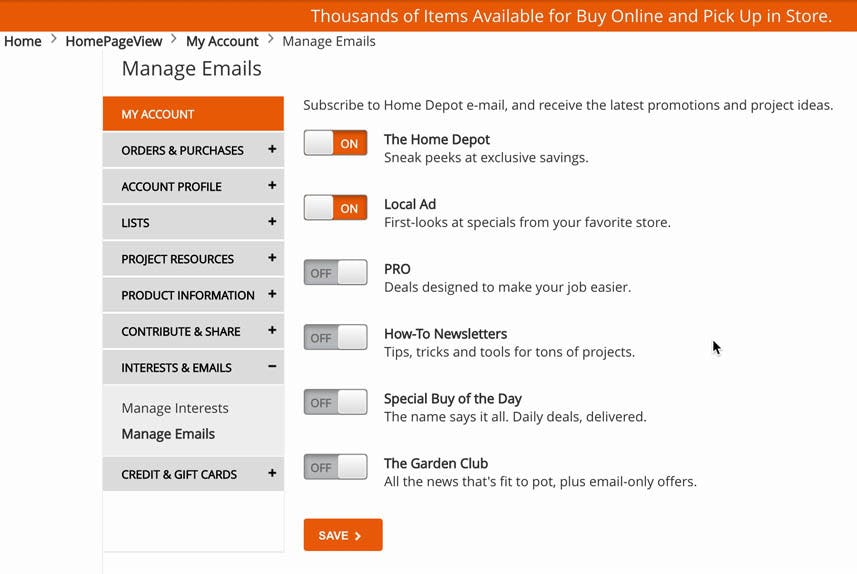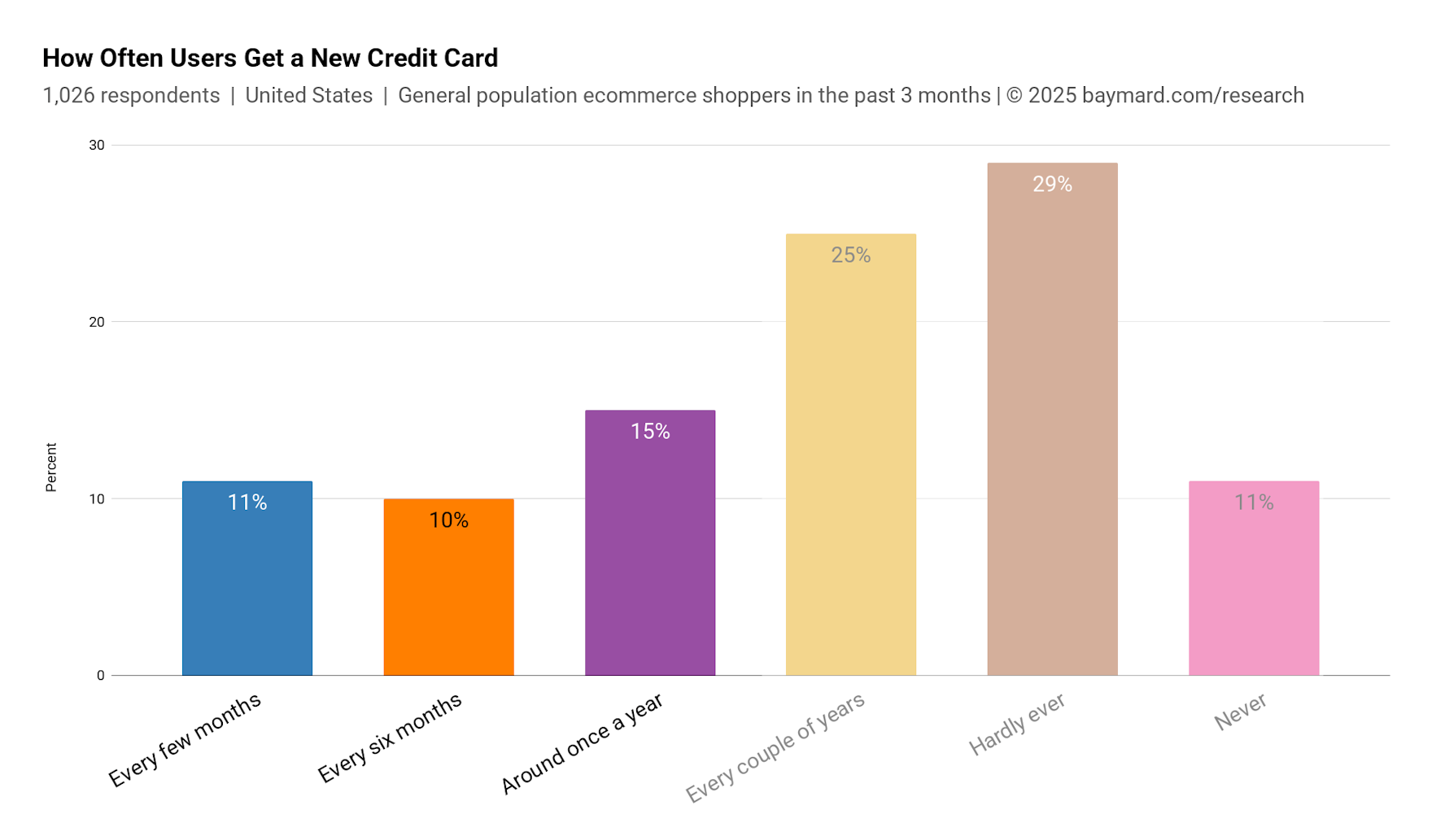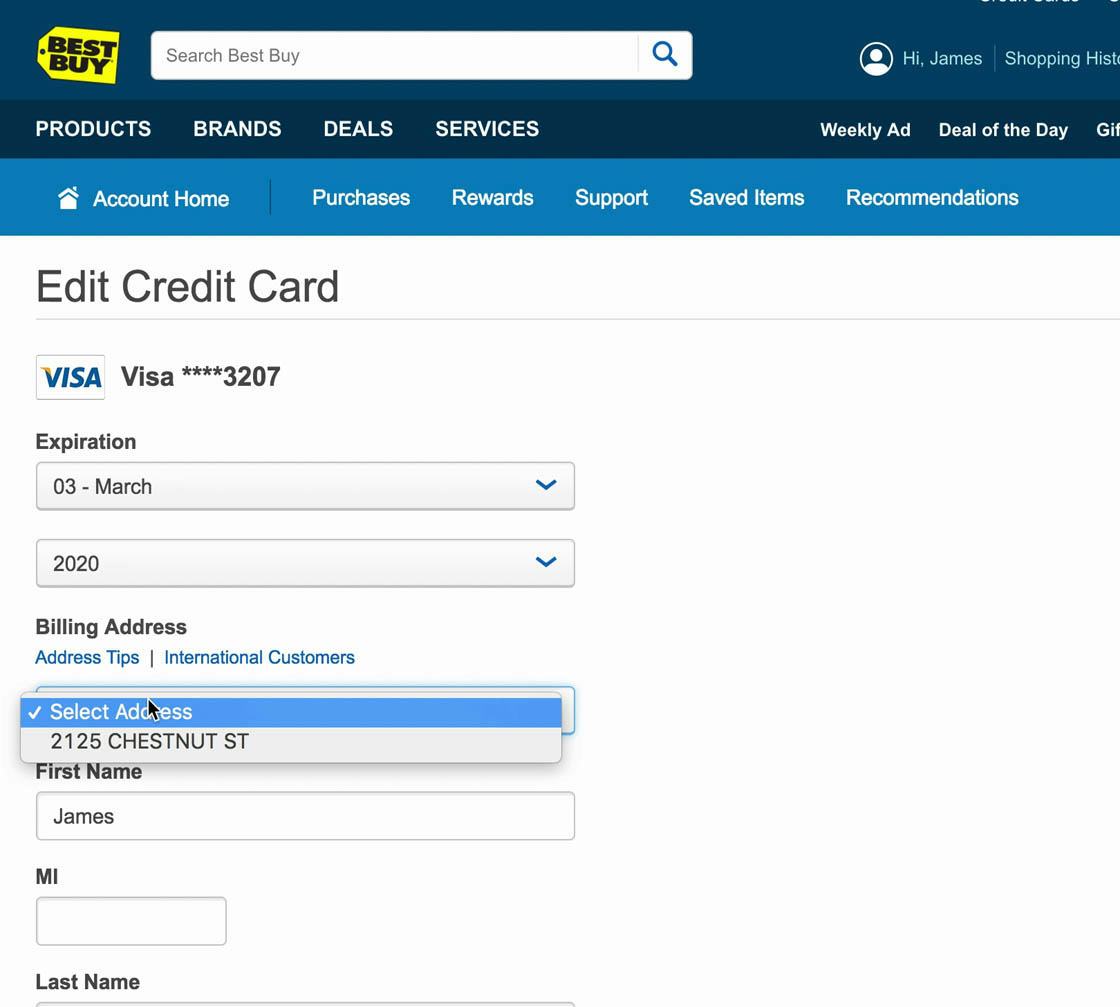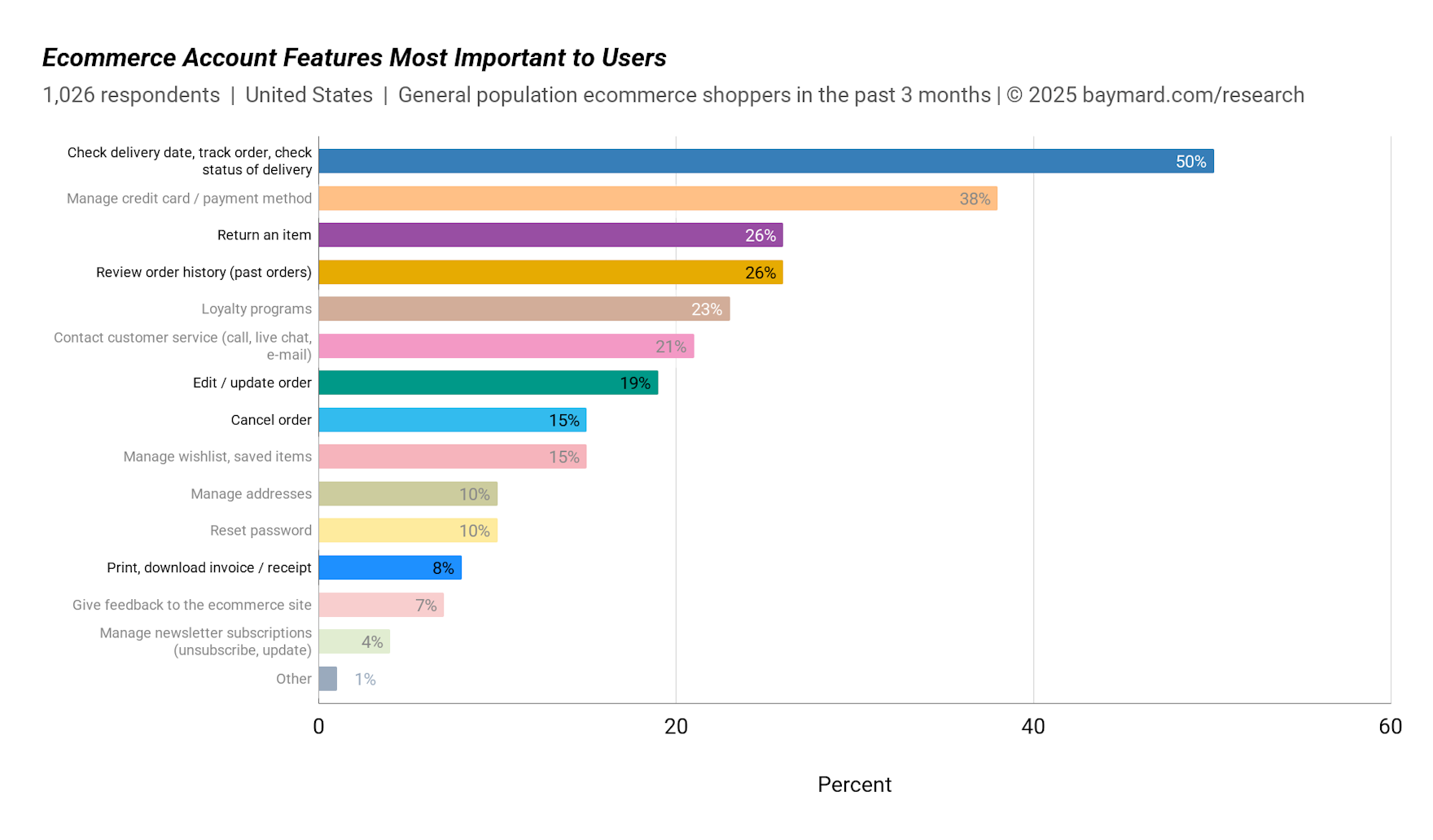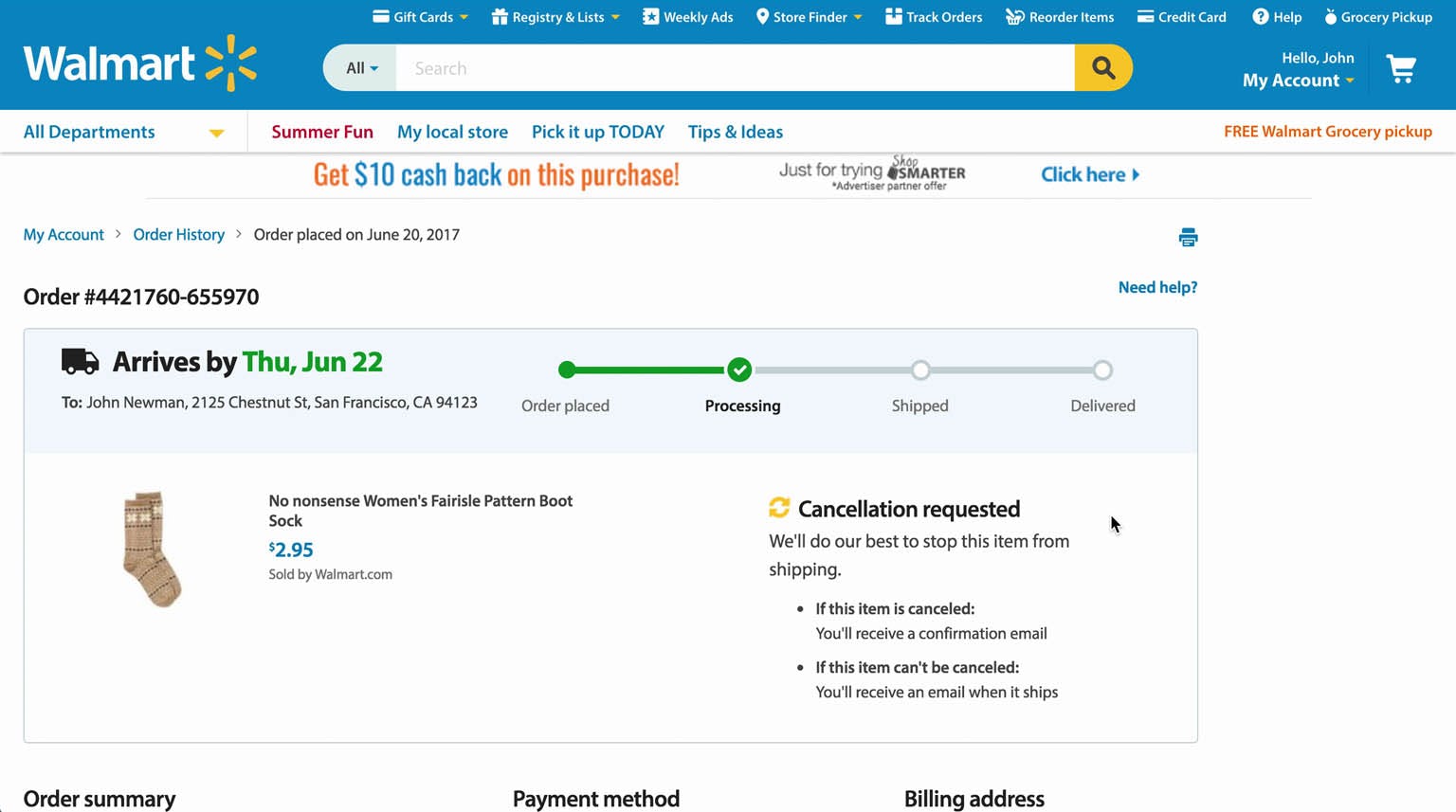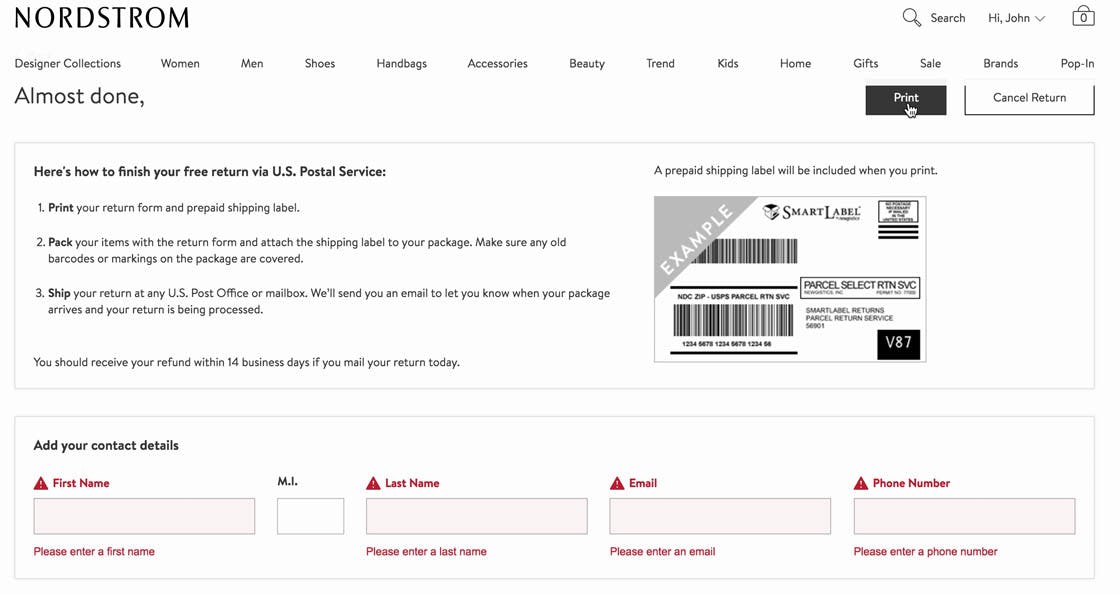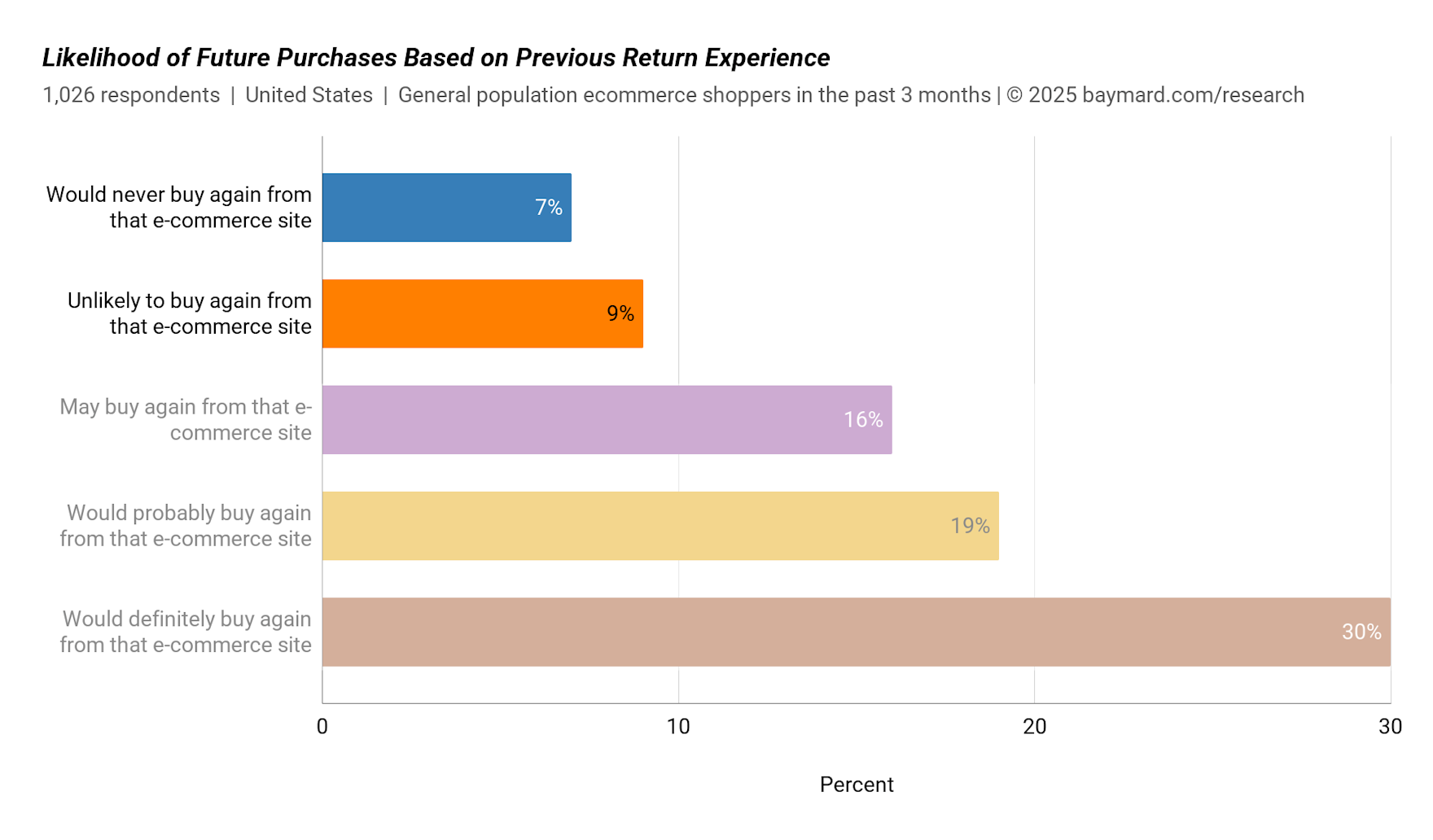Updated with new data in 2025
At Baymard the research team has just spent 2,866 hours usability testing and researching e-commerce Accounts & Self-Service features, layouts, content, and designs — leading to our new research study on Accounts & Self-Service UX.
Accounts & Self-Service is a unique aspect of the e-commerce user experience. Unlike the 6 other e-commerce themes we’ve researched, Accounts & Self-Service is often not part of the “direct purchase funnel” in that, in most cases, users don’t need to sign in to complete a purchase.
However, this isn’t to indicate that Accounts & Self-Service is less important than other e-commerce themes. Returning users — those most likely to use Self-Service features most often — are critically important to a successful e-commerce business, which means the Accounts & Self-Service UX performance can be just as important as the UX performance of the Product Page, Homepage & Category, or other e-commerce areas when it comes to a site’s overall long-term sales.
The Accounts & Self-Service study is based on both qualitative usability testing, following the “Think Aloud” protocol (185 test subject /site sessions, 1:1 moderated testing, both in-lab and remote, in multiple stages to track the entire Accounts & Self-Service experience), and a quantitative study with more than 1,026 US adults.
Despite testing leading e-commerce sites, users encountered more than 1,400 usability issues when trying to update an expired credit card or a stored address, track an order, or initiate a return. All of these issues have been analyzed and distilled into 65 usability guidelines specific to Accounts & Self-Service.
The 65 guidelines cover most aspects of the Accounts & Self-Service experience, including the design and performance of the “Account” drop-down and dashboard; features and information related to orders, order tracking, and returns; and specific account features available on almost all e-commerce sites (e.g., payment method management).
Features Critical to Accounts & Self-Service Performance
An aspect of Accounts & Self-Service covered heavily in this new study are the account features that are critical to users’ ability to manage their own accounts, in addition to the most widely accessed features.
Address Management
In Best Buy’s address management interface, the ‘Add Another Address’ option is initially clearly in view (first image), but eventually gets pushed down below the viewport when more addresses are added (second image). The visual emphasis of ‘Add Address’ changes significantly based solely on the number of stored addresses.
While users may not access their accounts very often to manage their addresses, address management is a crucial feature that must work well for users to be able to place and manage orders. For example, during testing it was observed that some sites nudge users to either edit or add an address, rather than present the options equally in the interface. As a result, users who are nudged to, for instance, “Add” rather than “Edit” an address tend to accumulate outdated addresses, increasing the chance that the user will select the wrong address during checkout.
Newsletter Communication
“‘First-looks at specials from your favourite store.’” I’d want that but where does it say the frequency of it? Because sometimes they could have specials every day”. Some test subjects noted the lack of options to adjust the frequency of emails on Home Depot, causing them to hesitate when deciding whether to sign up for newsletters they’d be interested in receiving.
Newsletters are the main way most sites communicate with users on a regular basis, and often serve as the only point of contact between sites and users over an extended period of time. But testing revealed that many sites have very poor newsletter management features, making it less likely that users will want to engage with a site through this ubiquitous form of communication. To take one example from our quantitative study, the second-highest reason why users unsubscribe from newsletters is because they get too many from a specific retailer. Yet testing revealed that many sites fail to allow users to adjust how frequently they receive newsletters — causing some to simply “Unsubscribe from All” to avoid having an overly cluttered email inbox.
Payment Methods Management
“Where is the number? Do I update it here? That doesn’t make sense”. When attempting to edit payment method details, many subjects struggled to understand that the interfaces would not allow them to edit their credit card number.
Payment methods management is revealed in our quantitative study to be the second-most important account feature for users, with 36% saying that they update their credit card at least once a year. And yet our testing shows that, for example, most sites fail to use an editing flow for managing credit cards that aligns with how users expect to actually manage their credit cards, leading to users being unclear how to go about changing their credit card information and reducing users’ confidence in their ability to manage their own payment data effectively.
Order Management
“Well, now it says ‘It cannot be canceled’… Then I’ll have to receive it and send it back — that’s annoying”. Walmart’s order status page indicated that cancellation had been requested, but created ambiguity by displaying an order state of “Processing” and “Arrives by Thu, Jun 22.”
Our quantitative results show that most users interact with Accounts & Self-Service features when they’re getting information on or seeking to manage an order they placed. However, within this subarea testing revealed many UX pitfalls that many users are likely to encounter — such as missing order status states, hard to find order cancellation features, or incomplete or confusing order tracking information — which will place more strain on help and customer service as users grow frustrated with their options to solve issues on their own.
Self-Service Performance and User Perceptions of Brands
“Oh, that pisses me off. I shouldn’t have to enter my information. They should already have my details, because I’m logged in to the website! If they have all my information, I don’t know why I have to add that again”. 44% of test subjects who were signed in to an account tried to submit a blank form at Nordstrom’s return-shipping step as their information was not prefilled, negating what should be a benefit of being an account holder.
In all of our previous studies we’ve noted instances where users who are having issues become very upset, to the point where their frustration negatively affects how they view the site or brand. In this Self-Service study this issue was again observed, with perhaps even greater frequency.
This perhaps shouldn’t be too surprising, given that the Accounts & Self-Service area of e-commerce is arguably the most personal of the e-commerce areas that a user experiences.
Users tracking a package, attempting to cancel a wrong order, or attempting to return a product often interact with a site on a deeper level than users, for example, browsing product pages or filtering product lists. They have more “skin in the game” after having invested much time (and money) with a site — and therefore are particularly attuned to any friction encountered while trying to manage Accounts & Self-Service features.
In short, frustration mounts quickly if it’s difficult to accomplish Self-Service tasks.
Indeed, when users find it difficult or impossible to manage Accounts & Self-Service features the consequences can be severe, both for users and for sites, as negative experiences in Accounts & Self-Service can lead to lasting brand damage.
For example, our quantitative study of 1,026 US adults finds that 7% would never purchase from a particular e-commerce site again, while 8% would be unlikely to do so — solely due to a negative return experience.
Clearly, an investment of resources to improve the user experience of Self-Service Accounts areas is warranted. This is especially true when factoring in how high-performing Self-Service Accounts will likely lead to reduced customer support requests — making the investment to improve the Self-Service Accounts features likely to eventually pay for itself.
Improving Account & Self-Service UX Performance
The performance of the user account area of an e-commerce site can lead to repeat and long-lasting customers — or it can so sour a user on a site that they never return.
In the next couple of months we’ll release 5 of the 65 Accounts & Self-Service UX guidelines from the study in a series of articles. If you have full access to Baymard Premium your account has already received automatic access to all 65 Accounts & Self-Service guidelines.

